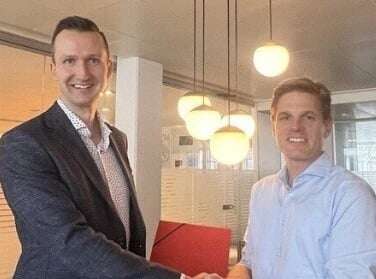Adopting tooling management software is crucial for any aircraft maintenance operation. Beyond the obvious benefits of a leaner process, any decision-maker will have to look closely at the quantifiable costs and benefits of the solution to build a business case. The following checklist applies to the ROI calculation of any software solution, both for investment and return. For the sake of clarity, we illustrated some ideas with examples applicable to our solution, MROTools.io.
Understanding investment costs
When you decide on a digital solution, the software licensing fees are only the most obvious and direct investment to factor in. Understanding the full spectrum of costs is necessary to avoid any surprises down the road. Here are some areas you may want to investigate.
-
1. Hardware requirements
Sure, you need a computer. However, you may require additional hardware to allow users to interact properly with the software (tablets, scanners, labels, etc.). These upfront costs should be factored into the budget for successful implementation. For example, an efficient tooling inventory control system will often rely on QR code labels. This means that you must allocate man-hours to label the tools, and maybe purchase barcode readers to place at strategic locations.
-
2. IT environment complexity
The larger the organization, the more complex the IT environment, featuring multiple databases interacting with each other at variable frequencies. At the same time, cyber criminality sparked strict security policies to protect your operations. What this means is that deploying new software impacts all aspects of your IT environment. With more and more solutions hosted on the cloud and interfacing with each other, accesses need to be created and monitored by your organization. Devices need to be managed and secured while giving the user the freedom to do what he must. The sooner your Infosec team and other software providers are involved the better prepared you will be.
-
3. Operational procedures and data reliability
Lastly, we must remember that software is but a tool to perform a task more efficiently. Its mere acquisition will not be enough to solve your problems. Procedures need to be reviewed; user cases need to be listed to make sure the new solution will attend to all the stakeholders' needs. Finally, if your software requires some type of data input, you need to make sure that data is reliable.
-
4. Additional investments
This last item may generate significant work, depending on the age of your current data source and how it has been maintained through the years. The good news is that this work will bring the first positive effects of the software deployment before you even start to use it: a clean slate!

Calculating Returns
Depending on the software being considered, there may be additional investments, but the above should give you a good overview of the global investment. Let's now look at a much more interesting aspect of the project, the returns. Here are some aspects that should be looked at to justify the investment to be made.
-
1. Labor Efficiency
Skilled labor is rare and expensive. In today’s market, any maintenance organization will mention the lack of recruits as a key obstacle to growth. This begs the question: how much time can you save by using software instead of your current process? The final answer should give you a number in FTE (full time equivalent) per year, which in turn gives you a financial value. First, you need to identify the tasks that will change with the deployment of the software. Once this is done you need to establish the current situation. Some organizations follow their personnel for a couple of days, stopwatch in hand, to measure an average of time (minutes) per task. Multiply that per shift per person and compare it to how long it would take with the software.
-
2. Risk reduction and digitalization effects
This next one can be a bit elusive; it lies in the positive effects of digitalization. It is prevalent when the software contains a feature that replaces a manual process or gives possibilities that were not available before. For example, with our tooling management software, users can locate tools at any time, even if those are currently being used by other employees. This means that the risk of FOD is reduced. Calculating this risk reduction may not be easy but it is possible by making some assumptions. In the same way, having all the tools accounted for makes it impossible to lose them, which means you can add to the savings the value of tools lost per year.
-
3. Impact on aircraft operations
Finally, you want to make sure your estimates stop at the end of the value creation chain of your company. For example, if you are an operator, your objective is to get the planes to fly as much as possible. If your solution has any impact on delays or aircraft availability, this should be part of your business case. To go back to our tooling management software example, I’d suggest that the lack of tooling may be the cause of a small percentage of flight delays. Considering the huge financial cost they have for an operator, even a small reduction can pay for the software many times over.
Conclusion
The decision to adopt a software, exemplified by our tooling management solution MROTools.io, for aircraft maintenance operations involves meticulous analysis. Beyond the apparent licensing fees, considerations extend to hardware, IT integration, training, and data cleanup. These upfront investments are essential to ensure a seamless and successful implementation. On the returns side, the software's impact on labor efficiency, risk reduction, and positive digitalization effects must be part of the business plan. Quantifying time savings in terms of Full-Time Equivalents (FTE), calculating risk reduction, and assessing the software's contribution to aircraft operations provide tangible metrics for evaluating returns.
Furthermore, the business case extends beyond immediate financial gains. Long-term value, operational efficiency, and the overall impact on the company's value chain should be considered. By addressing challenges such as the scarcity of skilled labor and mitigating risks like flight delays, the software becomes an integral part of enhancing the organization's competitiveness.
Say goodbye to the pain points of tooling management. MROTools.io simplifies booking, returning, and tracking tools for aircraft maintenance and repairs. Book a demo today now.



 Chris Henner
Chris Henner
 If you are interested in knowing how you can improve your efficiency in maintenance operations, book a 30-minutes discovery call with us.
If you are interested in knowing how you can improve your efficiency in maintenance operations, book a 30-minutes discovery call with us.

